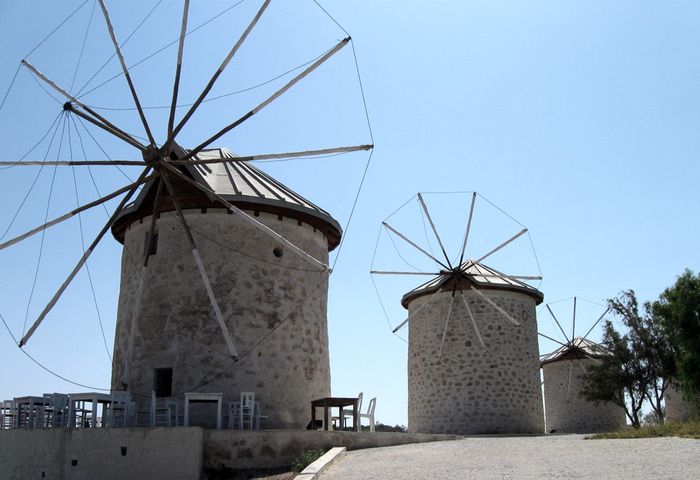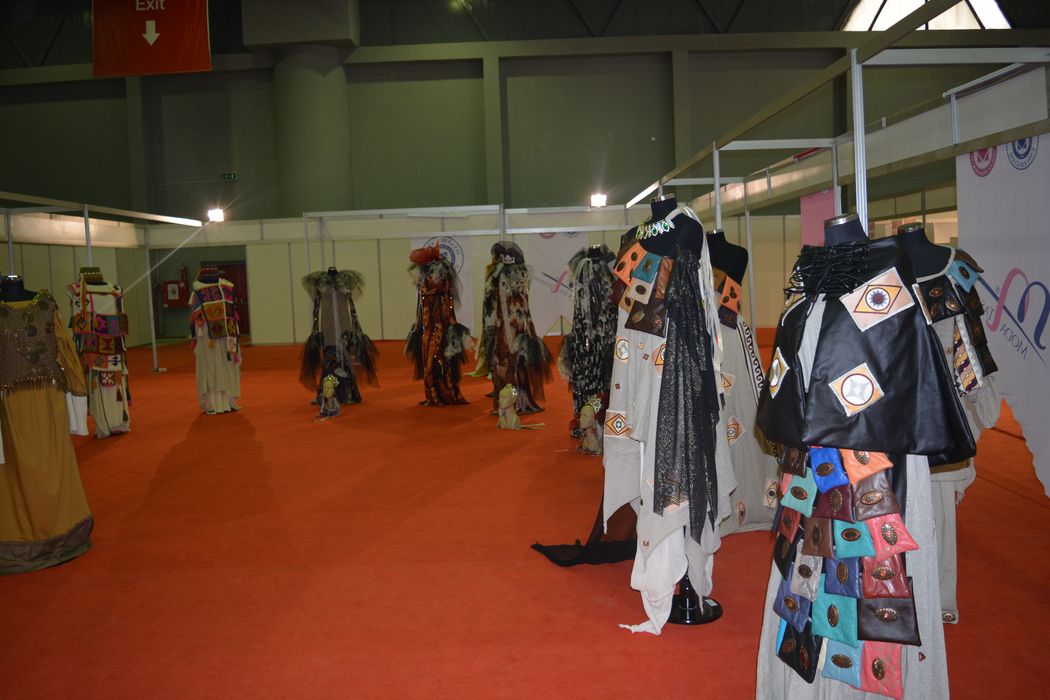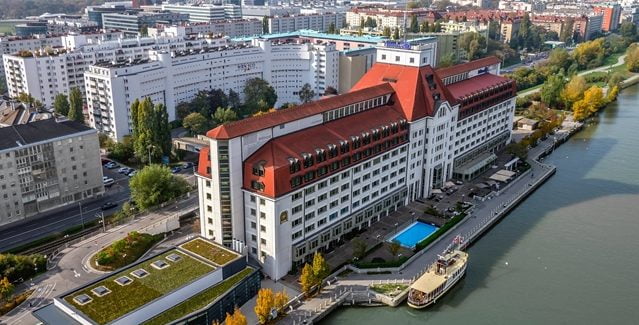Fron Datca to Alacati
If you are in serious pursuit of windmills, you will surely be a visitor of Alacati, renowned for its strong gusts. Most of Alacati` stone-bodied mills, also symbols of fertility in the area, now serve as restaurants. The white silhouettes of the electricity-producing modern mill-variety turbines set a pleasant backdrop for surfers along the Alacati coastline. Tens of them stand tall all day long, as if silently working and waiting for the wind.
When the wind stops in Alacati, life as well as the mills seems to come to a halt. Travelling down along the Aegean coast, your next stop for windmills should be Datca. 19 mills are currently being restored, remaining true to their original forms, through the municipality initiative. When the project is completed, handcrafts made by villagers and world-famous Datca almonds will be sold at the entrance to the mills, rejuvenating the area`s tourism.
The most striking difference Datca`s windmills bear is that they are three-storied. Back in the day, the top storey of a traditional Datca mill was used for the actual grinding while the middle storey served as storage and the entry level was a place for welcoming buyers and delivering goods. Grains carried to the mills by donkeys would be ground and poured into sacks in turn. They say that the miller faces the wind just as the fisherman faces the sea. When the winds stopped blowing by the wayside, the miller would sing folk songs to make the wait less mundane. For generations the mills would pass down through the families, their blades turning century after century…
Witness of the Past
Yeldegirmeni, the Turkish word for windmill, is also a neighborhood in Istanbul named after the mills that stand huddled between its towering apartment buildings. Their white bodies, once welcoming the arrival of spring and its multi-colored flowers, now lie in ruin, not with the least semblance to their original forms. Speaking of original forms, we must not forget Turkey`s other windmill-rich locations, including Bozcaada Island, Goynuk, Ayvalik and Samli in Balikesir. The Samli windmills stand out from the classic stone forms as their bodies are comprised of wooden cabins rather than smooth cylinders.
With their broken wooden wings and crumbling bodies, these towers of stone now only bring loneliness to mind as they wait for their final vanishing act in the hands of mankind. No longer do their faces smile at the winds atop hills, while a city sprawls below. No one knocks upon their wooden doors, which used to close at the end of a joyful yet tiring day. If their walls could talk, they would speak of countless loves and separations, but now only the faintest whispers of the wind echo off of them…
A short History of Windmills
The first windmills in history have been found in Egypt and China, dating from around 2800 BC. The earliest windmills to be documented in written form were built In Seistan, near the Iran-Afghani border in 644 AD. The first wind turbine, or the modern-day windmill, was produced in 1890 in Denmark to convert wind power into electrical energy. As the 20th century introduced mankind to steam power and widespread electricity in cities, the traditional role of windmills began to settle into the dust.
This article is published for enmarbg. For more interesting information about customized tours Bulgaria, please visit customized tours Bulgaria .
Read More about Traditional crafts








